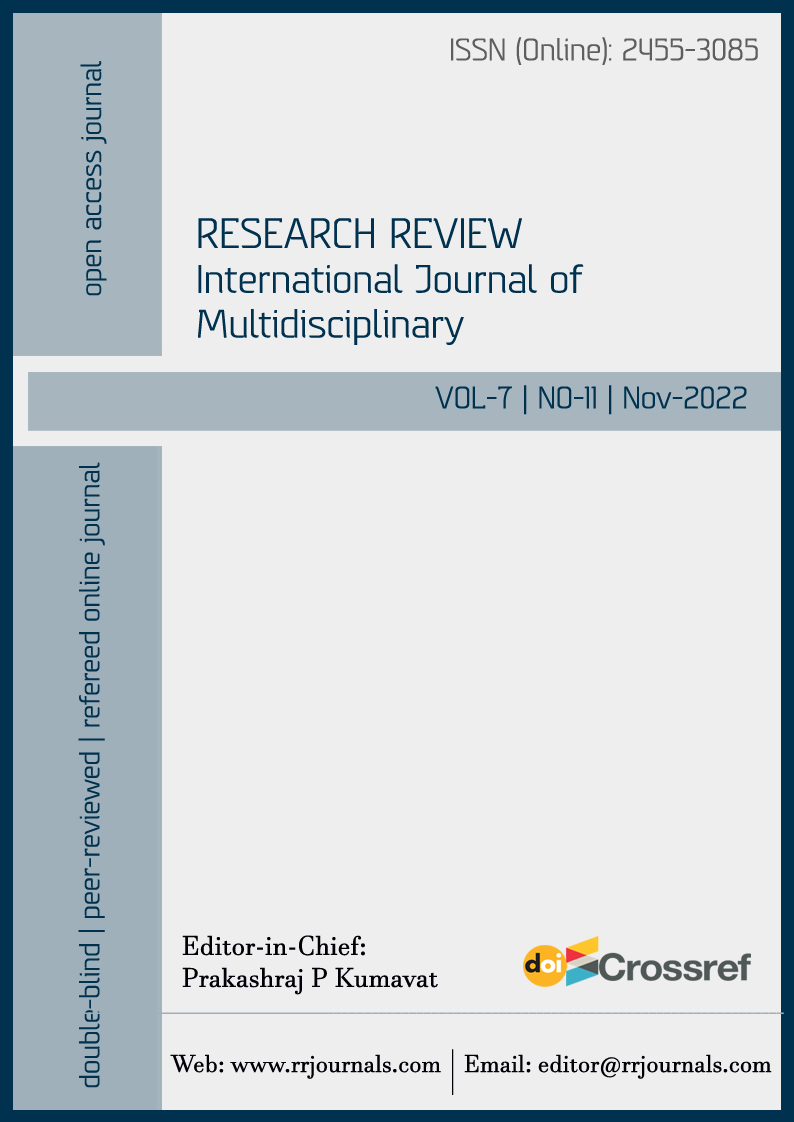The Roadmap of India’s Foreign Relations and U.S.A Geo-Politics Interests in the New World Order
DOI:
https://doi.org/10.31305/rrijm.2022.v07.i11.009Keywords:
India, USA, Foreign Policy, National Interest, World Order, Diplomacy, Geo-politics, Covid-19Abstract
Over the past two decades, India-USA relations have expanded in almost every conceivable dimension, though not as companions but as bilateral relations on parallel journeys. How should India’s emerging role in the international system and India’s growing contribution to the strength and stability of the global order be viewed? What are the issues and challenges that stand against India’s growing international role and what opportunities should it take advantage of as India continues to transform itself into an important global role? The strategic state of relations between India and the USA provides a useful look at these questions. Despite India’s undeniable regional and global importance to American interests, for several decades the USA was unwilling to consider key areas to further deepen bilateral and regional cooperation. The main reason for this was that India had nuclear weapons but in the early years after the year 2000, the USA began to see an active and constructive partnership with India as necessary to move forward on many issues. For example, America’s global war on terror was joined by India’s fight against its threat of organized terrorism. It gave both countries a practical platform for greater cooperation in intelligence, law enforcement and military relations. Cyber security cooperation between the two countries has steadily increased in recent years. Furthermore, the US has realized that it is necessary to increase cooperation with India to counter the growing China as China is already exercising significant economic and political influence at the regional level and beyond. India, on its part, recognized long ago that China’s main strategic goal was to replace the USA as the most important security force in Asia and above all to destroy the current international global order set by the USA to challenge. Along with this, India also knows that America’s strong regional and global position is important to bring under control of China’s strategic ambition. As in the October 2019 edition of Foreign Affairs Magazine, Robert D. Blackville and Ashley J. Tellis wrote: “As far as China is concerned, American and Indian national interests are parallel to each other. The USA sought to maintain stability in Asia through an arrangement based not on Chinese domination but on the security and autonomy of all countries in the region. India, because of its fear of Chinese supremacy, supported America’s approach to China.’
References
Jeff M. Smith, “Modi 2.0: Navigating Differences and Consolidating Gains in India–U.S. Relations” (Washington, DC: The Heritage Foundation, August 5, 2019), https://www.heritage.org/asia/report/modi-20-navigating-differences-and-consolidating-gains-india-us-relations.
Ashley J. Tellis, “India’s Path to the Big Leagues,” Carnegie Endowment for International Peace, September 9, 2020, https://carnegieendowment.org/2020/09/09/india-s-path-to-big-leagues-pub-82470
Paul Staniland, “4 Questions on India, Liberalism, America, etc.,” Paul Staniland, September 25, 2020, https://paulstaniland.com/2020/09/25/4-questions-on-india-liberalism-america-etc/
Alyssa Ayres, “Human Rights and Democracy in South Asia” (testimony, Washington, DC, September 22, 2020), https://www.cfr.org/sites/default/files/pdf/ayres-hfac-written-testimony-09222020.pdf.
Walter C. Ladwig III, “Strengthening Partners to Keep the Peace: A Neo-Nixon Doctrine for the Indian Ocean Region,” in The Indian Ocean and US Grand Strategy: Enduring Access and Promoting Security, eds. Andrew Dombrowski and Andrew C. Winner (Washington, DC: Georgetown University Press, 2014), 27ff.
Anit Mukherjee, The Absent Dialogue: Politicians, Bureaucrats, and the Military in India (New York: Oxford University Press, 2019); Arzan Tarapore, “The Army in Indian Military Strategy: Rethink Doctrine or Risk Irrelevance,” (New Delhi: Carnegie India, August2020), https://carnegieendowment.org/files/Tarapore_Ground_Forces_in_Indian_Military.pdf.
Inside U.S. Trade, “Lawmakers Keep Up Pressure on Biden to Support TRIPS Waiver,” March 17, 2021; Doug Palmer, “Poor Countries Are Fighting with Drug Companies over Vaccines. Now Biden Must Pick a Side,” POLITICO, March 22, 2021.
Aparna Pande, “The US Hasn’t Woken Up to India’s Nightmare of a Two-Front War with China and Pakistan” (op-ed), Print (Delhi, online), July 20, 2020.
Brahma Chellaney, “Will China Turn Off Asia’s Tap?,” Project Syndicate, December 22, 2020; “India Plans Dam on Brahmaputra to Offset Chinese Construction Upstream,” Reuters, December 1, 2020.
“India Takes Its Tussle with China to the High Seas,” Financial Times (London), October 20, 2020; Abhijit Singh, “India Has a Bigger Worry than the LAC” (op-ed), Wire (Delhi, online), June 12, 2020.
Daniel Markey, “Preparing for Heightened Tensions Between China and India,” Council on Foreign Relations, April 19, 2021.
Vijay Oberoi, “All Is Not Quiet on the Eastern Front” (op-ed), Citizen (Delhi, online), October 12, 2020.
Vijay Gokhale, “The Road from Galwan: The Future of India-China Relations,” Carnegie India (New Delhi), March 10.
“China Becomes India’s Biggest Trading Partner in First 9 Months of FY21,” Business Standard (Delhi), February 24, 2021.
3 Separate Brawls, ‘Outsider’ Chinese Troops & More,” India Today (Delhi), June 21, 2020.
Sushant Sareen, “Pulwama Propelled India’s Pugnacious Policy,” Observer Research Foundation (New Delhi), February 17, 2020.
Adil Sultan, “India’s ‘Surgical Strike’ Doctrine: Implications for South Asian Strategic Stability,” Strafasia (London, online), February 26, 2020.
“With Trump Silent, No ‘Sheriff’ in Town on Pakistan-India Crisis, Diplomats Say,” NBC News (online), March 6, 2019; “The Trump Administration and the Indo-Pakistan Crisis,” Economist (London), March 7, 2019.
Sushant Singh, “The New Non-Alignment” (op-ed), Indian Express (Mumbai), October 12, 2018.
Manoj Joshi, “Still Best Friends: India Cannot Simply Abandon Russia” (op-ed), Times of India (Delhi), October 13, 2018.
Nandan Unnikrishnan, “Bridge the Geopolitical Distance With Russia,” Observer Research Foundation (New Delhi), February 16, 2021.
C. Raja Mohan, “India and the Sino-Russian Alliance” (op-ed), Indian Express (Mumbai), June 11, 2019;
Sadanand Dhume, “Moscow Isn’t New Delhi’s Pal” (op-ed), Wall Street Journal, July 23, 2020.
Rudra Chaudhuri and Shreyas Shende, “Dealing with the Taliban: India’s Strategy in Afghanistan After U.S. Withdrawal,” Carnegie Endowment for International Peace, June 2020; “Biden-Blinken’s New Roadmap for Afghanistan Raises Many Concerns for New Delhi,” Hindu (Chennai), March 9, 2021.
Downloads
Published
How to Cite
Issue
Section
License

This work is licensed under a Creative Commons Attribution-NonCommercial 4.0 International License.
This is an open access article under the CC BY-NC-ND license Creative Commons Attribution-Noncommercial 4.0 International (CC BY-NC 4.0).



